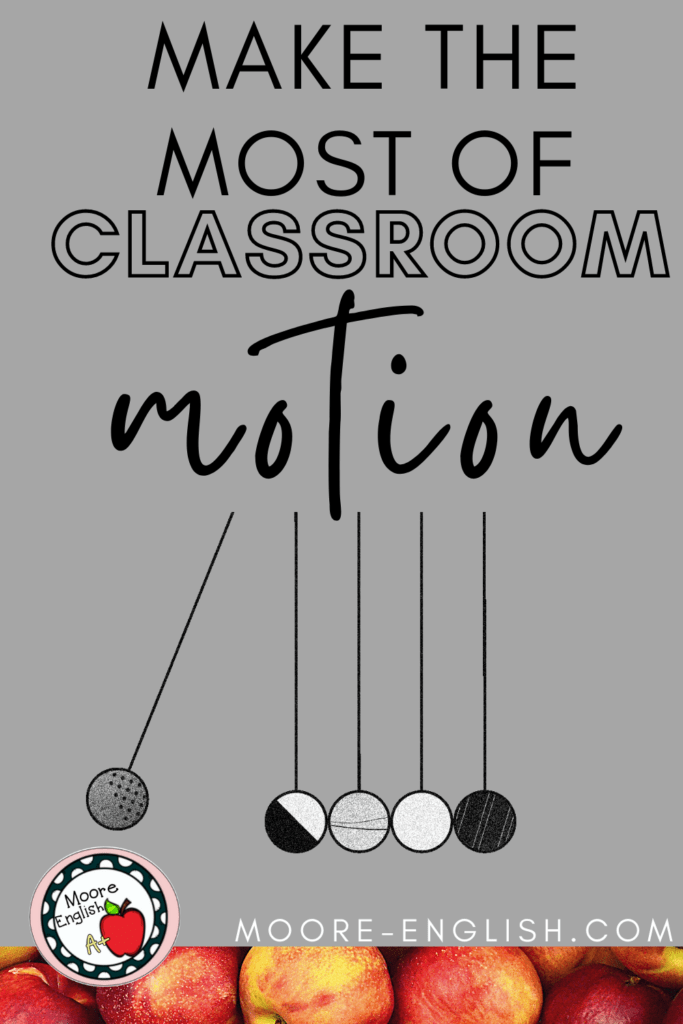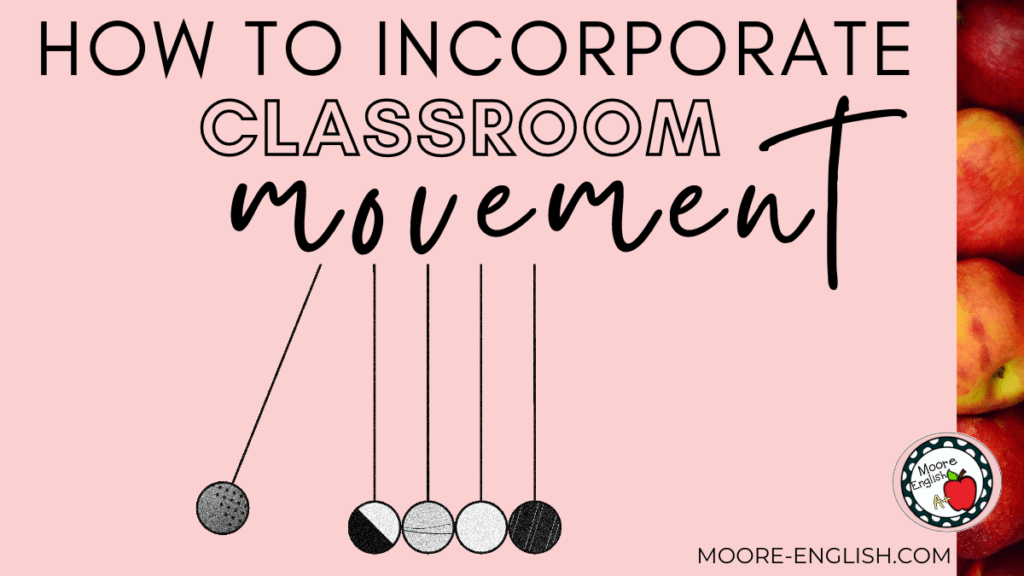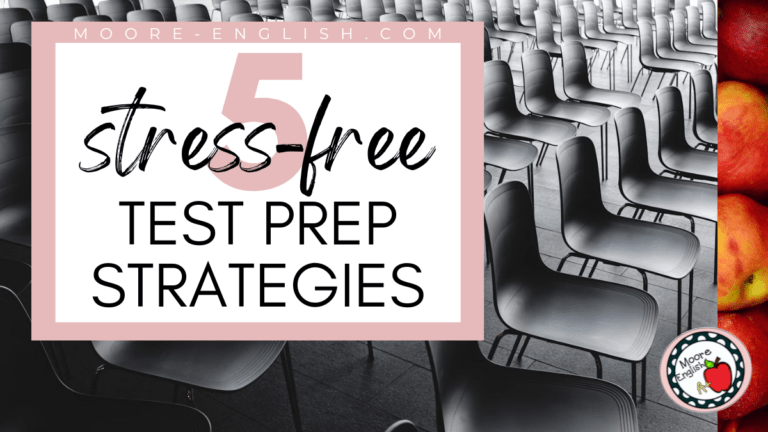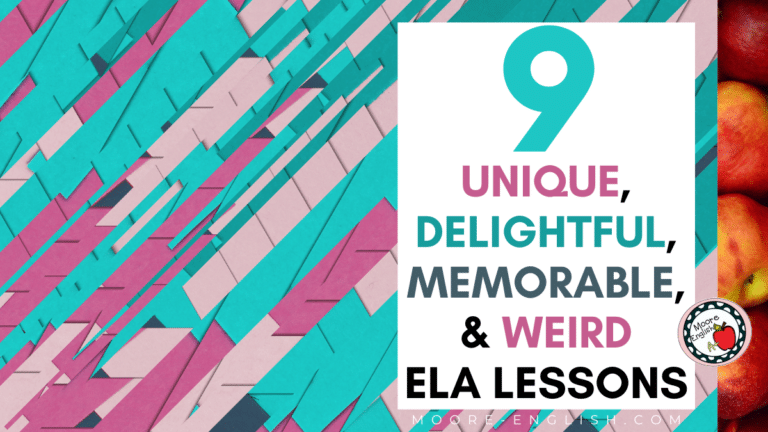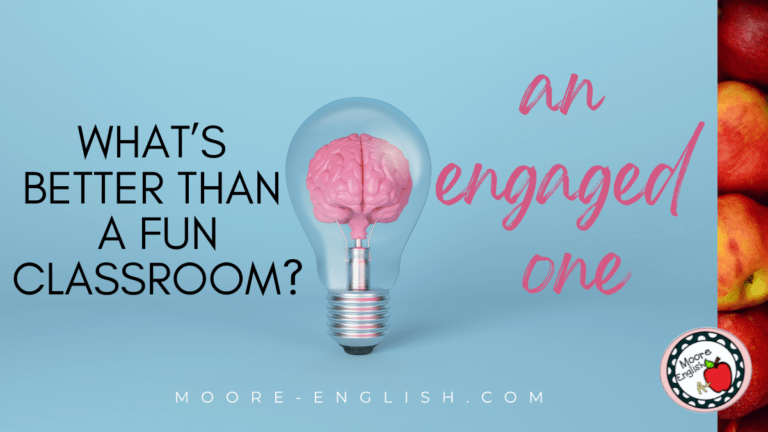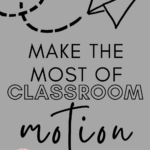During the first week of school, I emphasized meaningful classroom movement. First, students participated in some socially distanced back-to-school stations. The next day, students engaged in rotating mini-discussions. On Friday, we visited the library for a Book Tasting!
All the movement helped students get to know the classroom, practice procedures and expectations, and build classroom community!
With that excitement in mind, I wanted to share 7 ways to incorporate movement in high school language arts!
This post this post may contain affiliate links. Please read the Terms of Use.
Move with Purpose
First and foremost, it’s important that teachers incorporate movement when it serves a purpose. As with any other instructional component, it’s important to plan for movement. While lesson planning, consider these questions:
- What is the purpose of the movement?
- Will movement serve my students in building community?
- How can I help students understand the value of movement?
- How can I limit the anxiety that movement might cause some students?
- Which instructional strategies benefit the most from including movement?
- What classroom procedures will help students be successful as they move?
- When and where in the lesson will incorporating movement provide the greatest benefit?
Instructional Movement
As I think about the new school year and begin to plan for movement, there are a few instructional strategies I’m most excited to use.
Gallery Walks are a great way to help students move with purpose. In this instructional strategy, movement supports the “gallery” effect and encourages students to associate a location in the classroom with an idea or concept. Grab my visualization bundles to set up a gallery walk with no stress!
Stations are another instructional strategy I’m excited to revisit. During distance learning, students were able to engage with digital stations. However, this missed some of the bigger benefits of classroom stations. In particular, my guided reading station suffered in terms of relationship building, intervention, and private feedback. In-person stations are great because they are structured but still offer teachers flexibility.
Going outside was something students were still able to do last year while social distancing. In particular, my students love reading and acting out classroom plays outside. Plus, going outdoors is a great place for independent reading.
Movement in Speaking and Listening
For me, incorporating movement in the classroom comes most naturally when we’re working on speaking and listening standards. Classroom discussions are high-interest events for students, so it’s easy to build on that energy by incorporating movement. Here are some of my favorite discussion strategies:
Inside-Outside Circle is my favorite discussion strategy when I want students to interact with as many classmates as possible in as short a time as possible. With this strategy, students choose a partner. One partner stands on the outside of the circle, and the other student stands on the inside of the circle. I provide students with a question, topic, goal, or task card to discuss with their partner to 1-3 minutes. At the end of that time, students thank their partner, and one circle moves. This provides students with a chance to encounter several classmates’ opinions and to work through a variety of questions in a short period of time.
Snowball Discussion is my go-to strategy for sensitive topics like racism in To Kill a Mockingbird or privilege in The Great Gatsby. With this strategy, students start with their elbow partner and discuss the topic. Elbow partners become familiar over time, so this is a great place to begin discussing a touchy subject. After 3-4 minutes, two partnerships connect to form a group of four, and we repeat that “snowball” until students are in groups of 8-10. This gradual building of the group size scaffolds difficult discussions and helps students slowly encounter new ideas without overwhelming anyone.
Jigsaw Groups are my favorite discussion strategy for building prior knowledge. With this strategy, students come together in a group of four and divide the workload. Then, those four students break apart to work with their counterparts from other groups, forming “expert groups.” After the expert group learns as much as they can, students move back to their original group to “teach” their classmates about the topic. This kind of movement supports content development.
Presentations that Move
My school’s curriculum requires students to make at least one formal presentation. Traditional presentations where students research, design a slideshow, read their slides to their classmates, and sit down to tepid applause are boring. Plus, this kind of presentation reinforces poor speaking and listening habits.
Instead, I prefer a Science Fair-style model for formal presentations. Firstly, students complete their research and design a handout and visual to share their insights. Then, each student is responsible for a “booth” where visitors come to chat about the student’s work.
Because of COVID-19, we weren’t able to use this presentation model last year, but it’s one I hope to revisit this year. This kind of slow, organic movement helps take the anxiety out of presenting while still holding students accountable for their work. Furthermore, students still practice their speaking and listening skills in this context but with less stress.
Over the years, I have used this presentation model when students are sharing research. Additionally, this works well when students want to share their independent reading projects and Book Cover Design Projects.
What strategies do you use for incorporating movement in your classroom?

